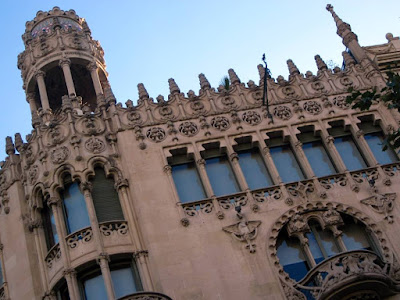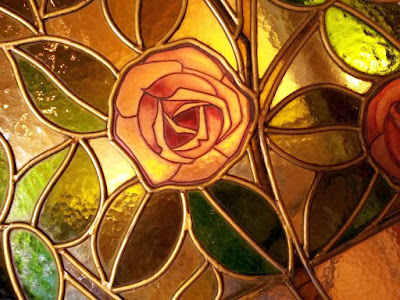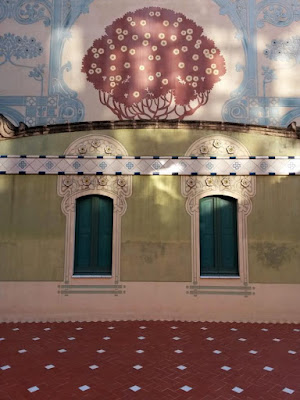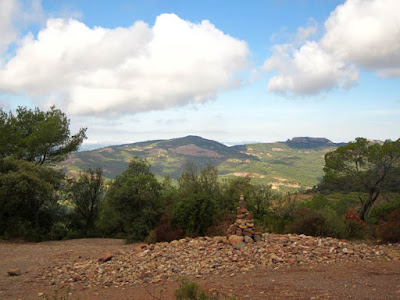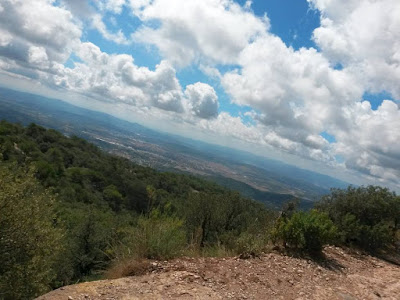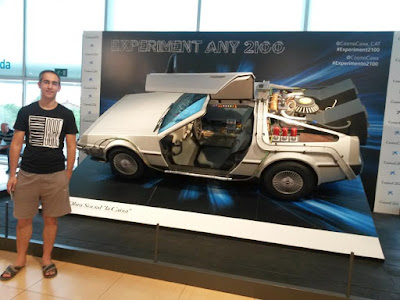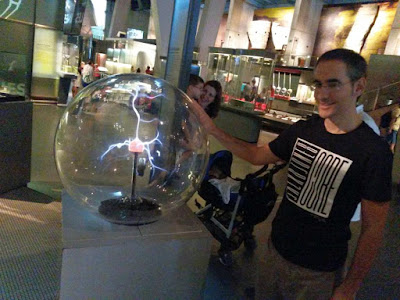The Casa Lleó i Morera is one of the most important modernist buildings of Barcelona and it was designed by the architect Domènech i Montaner. However it isn't as popular as other modernist buildings maybe because it could not be visited until recently.
It is located in the elegant Passeig de Gràcia in Barcelona near Casa Batlló (designed by Antoni Gaudí) and Casa Amatller (designed by Puig i Cadafalch (in what is known as "Manzana de la Discordia" or "Block of Discord" for the professional rivalry of the three architects of these buildings.
Currently you can visit the first floor which include rooms with very highly decorated wooden walls and ceilings, a hall with sculptures and mosaics and a gallery at the rear of the house with an impressive stained glass window.
Below you can see some pictures of my visit to this modernist building:
Casa Lleó i Morera in Barcelona is a modernist building designed by the architect Domènech i Montaner
The Casa Lleó i Morera stands on the southern corner of the block known as the "Mansana de la Discòrdia" (block of discord), where the Casa Amatller, by Puig i Cadafalch, and the Casa Batlló, by Antoni Gaudí, are located too
On the right, gallery of the third floor of Casa Lleó i Morera, located in the elegant Passeig de Gràcia in Barcelona
Tempietto on the roof of Casa Lleó i Morera

High quality wooden doors in Casa Lleó i Morera because after one hundred years they still close perfectly
Detail of a rose in a stained glass window of a door in Casa Lleó i Morera in Barcelona
Casa Lleó i Morera
Sculptures on the legend of Sant Jordi in the elevators hall of Casa Lleó i Morera
Gallery covered with an impressive stained glass window in the first floor of Casa Lleó i Morera
In my opinion this gallery covered with stained glass windows is the most beautiful place in Casa Lleó i Morera
Rooster in stained glass window on the gallery on the first floor of Casa Lleó i Morera in Barcelona
As well as the previous cock, I liked too these Geese in the same stained glass window
Mosaic on a wall of the room of the previous gallery
Rear facade of Casa Lleó i Morera in Barcelona
Rear courtyard of Casa Lleó i Morera
Next you have links of some of the most beautiful places of Barcelona and surroundings. Most of them are located in four areas: Modernism Route, Gothic Quarter (and Old City), Montjuïc and Barcelona Seafront. Cliking on the links below you will get more and information and pictures.
- Modernism Route
- Sagrada Familia
- Park Güell
- Casa Milà (La Pedrera)
- Casa Batlló
- Palau Güell
- Hospital de Sant Pau i la Santa Creu
- Palau de la Música Catalana
- Casa Calvet
- Torre Bellesguard
- Col·legi de les Teresianes
- Pabellons Güell
- La Boqueria
- Gothic Quarter, Montjuíc, Promenade and Tibidabo
- Santa Maria del Mar
- La Rambla
- Montjuïc Castle
- Magic Fountain
- Olympic Marina
- Promenade and beach
- Tibidabo
Finally, clicking on the next link you will find more links to other beautiful places in Barcelona.


